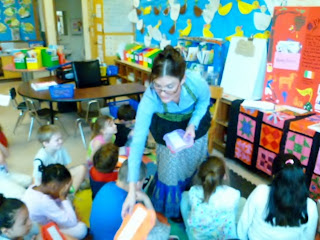The Four Elements: Based on student readiness, interest and learning profile I will use to differentiate...
1) Content- what the student needs to know or how the student will gain access to information.
When writing lesson plans I present ideas through both auditory and and visual means. My lessons include: A Reteach and Extension: For lower and higher level learners.
 |
| Visual and Audio Tour of the Solar System! Presented by Super Student Teacher. |
2) Process- activities in which the student engages in order to make sense of the content.
My favorite thing to incorporate is manipuletives or other hands-on supports for students. Using tiered activities and varying the length of time a student may need to complete a task is also a way I may choose to differentiate a lesson.
 |
| Fabio Fractionelli InteractiveTri-fold: Students use different manipulatives to express fractions! Created and designed by Super Student Teacher for Grade Level 1. |
3) Products- culminating projects that ask the student to rehearse, apply and extend what they have
learned.
Depending on the grade level: I enjoy giving students options of how to express the required learning (eg. create a puppet show, write a letter, create a mural). Allowing students to work alone or in small groups to complete a project. Providing rubrics to match and extend students' varied skill levels.
 |
Solar System Unit: Students had a choice to work in small group to create all 8 planets from the solar system... ...and then measure their distances apart.... OR |
 |
| Students could choose to work individually on creating their own planet including a written description of their planet. |
4) Learning Environment- the way the classroom works and feels.
Some learners need to move around to learn, some learners do better sitting quietly. Depending on the lesson: I make sure there are places in the room to work quietly and without distraction, as well as places that invite student collaboration. Another strategy, develop routines that allow students to get help when I can't help them immediately (The Buddy System).
(Buddy Support System)
Assigned Buddies: Lower level learner and higher level learner pair sit close for anticipated needed support.





































